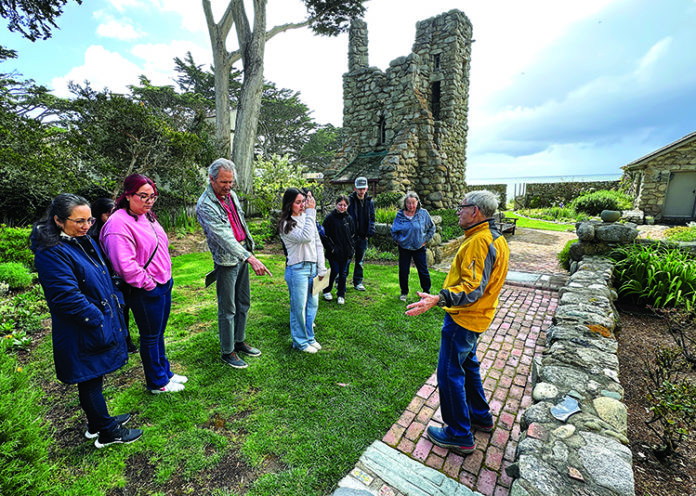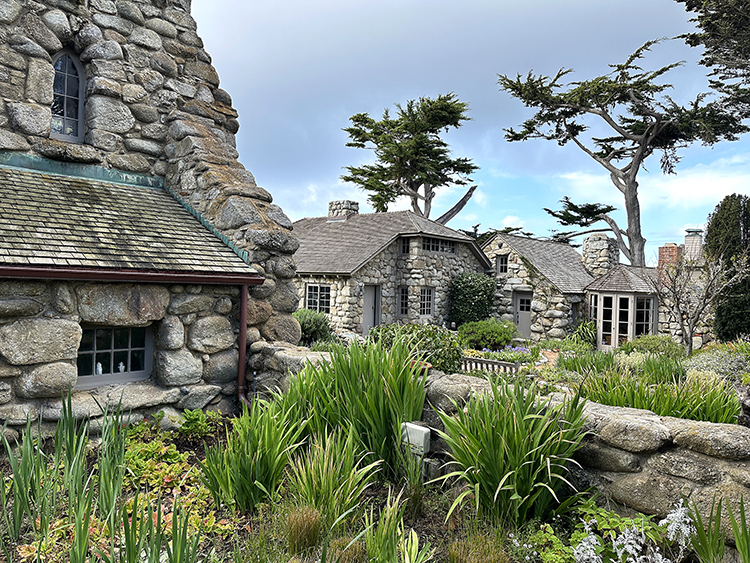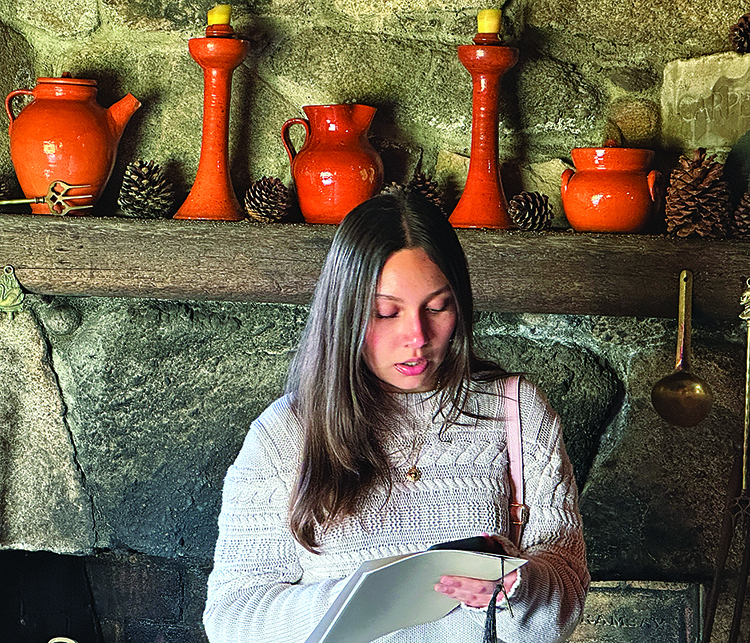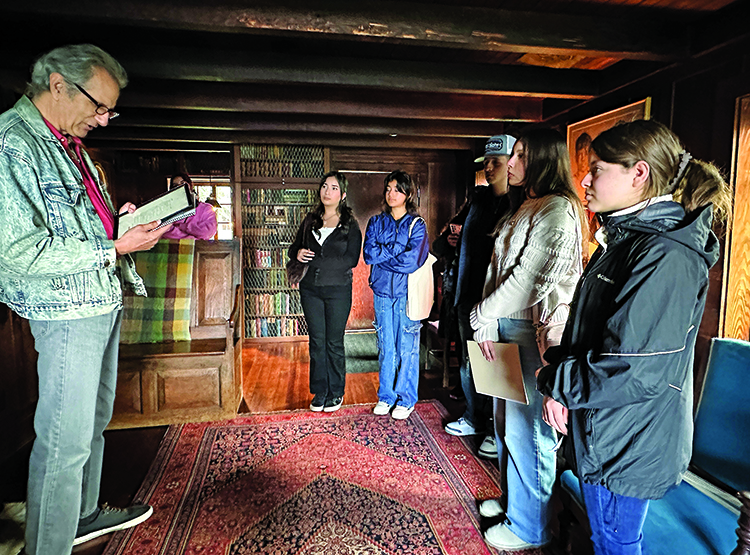
Five students from Aptos and Watsonville high schools toured the historic Tor House and Hawk Tower in Carmel Saturday, a field trip designed to sharpen their interest and skills as young poets.
The iconic stone home and tower, built above the rugged rocky coastline at Carmel Point, was the home of American poet Robinson Jeffers and his wife, Una.

Heading up the two-hour tour was Watsonville Poet Laureate, Bob Gómez and Leonor Xóchitl Pérez, Executive Director of the Mariachi Women’s Foundation.
The group was welcomed by Tom Rusert, Outreach Programs and Docent Training Coordinator, who led them on an information-packed tour around the grounds, the two-story home and Hawk Tower.
“Our group went through the cottage with quiet respect,” Gómez said. “I had prepared them in advance to read their poems out loud at some point, and I thought it worked beautifully.”
According to the Poetry Foundation, Jeffers studied literature, medicine, and forestry during his years as a student at the University of Southern California and the University of Washington. In 1906 he met a fellow graduate student, Una Call Kuster. The two fell in love, though at the time Una was married. They married in 1913, the day after Una’s divorce was finalized, and moved to Carmel.
They lived in Carmel for the rest of their lives, building the Tor House. It was there that Jeffers turned exclusively to writing poetry and became a major figure in American Poetry.
“I was especially pleased to introduce our Youth Poet Laureate, Eva Sophia Martínez Rodríguez, to the other students,” Gómez said.

Rodríguez is an Aptos High student, and the four others attend Watsonville High. They are participants in the Tierra y Justicia: Artists United for Environmental Justice project.
“Under a California Arts Council Impact Grant, I collected over 60 poems from students and community members on the themes of global warming, endangered species and climate justice,” Gómez said.
Since Jeffers largely deals with the power and beauty of sea, sky, stone and Earth and the freedom and force of wild animals, Gómez stressed that “the thematic connection to his work is strong, and that gave our visit a deeper significance.”
Martinez Rodriguez said she was inspired by the visit.
“I’ve never been there,” she said. “But just being there in a famous poet’s house opened my mind a bit and it gave me more of a vision of what I want to write about. Besides being a poet’s house, we were also exposed to another life where these people lived their lives and built this amazing house and had kids and were humans at another time.”
She said she’s been writing poetry since 2020 when putting words on paper helped her “work through a situation.”
“And I just kept writing more and more,” she said.
“Bob has really helped me get to know other people and poetry and to connect,” she added.
Rusert covered a trove of history of the grounds, explaining that the stones of the home were collected along the nearby shore, while other larger ones once served a ballast from ships arriving from Europe and elsewhere. A slab of slate in the walkway, he said, was once a billiard table.
Unicorns and owls, various masks, photographs , an early day musket, a narwhal tusk and scads of art items punctuate the compound.
“It was a crazy kind of life, how this place was made; this was a real tactile world,” Rusert said. “Jeffers largely wrote about a sense of place and that was one of his main points.”
Each student was asked to read one of their own poems along the tour.

“All of the students’ work, though they share some of Jeffers’ dark vision of humanity, also very often serve
as a call to action to protect the planet and all living things,” Gómez said. “I think Jeffers would have been proud of them for standing up and speaking out for this threatened earth.”
Upcoming:
The Tierra y Justicia project engages the Pajaro Valley community, children through adults, in using poetry, art and dance to express their concerns about environmental justice and to generate hope and action through performance of their work on May 10, at 7pm at the Mello Center for the Performing Arts in Watsonville.













